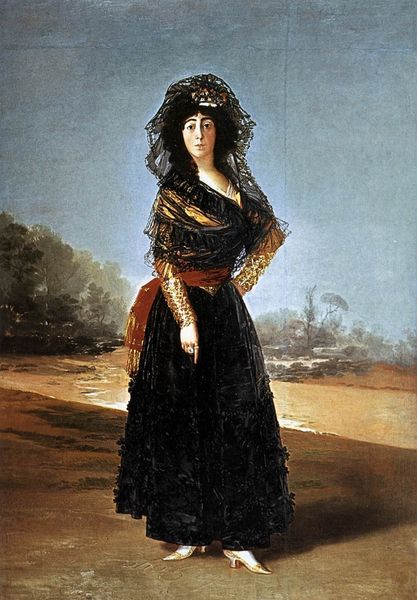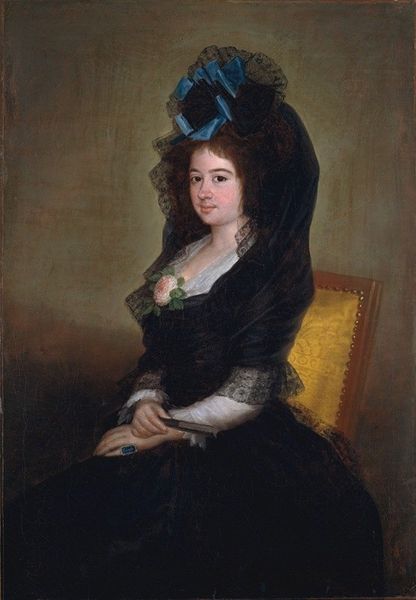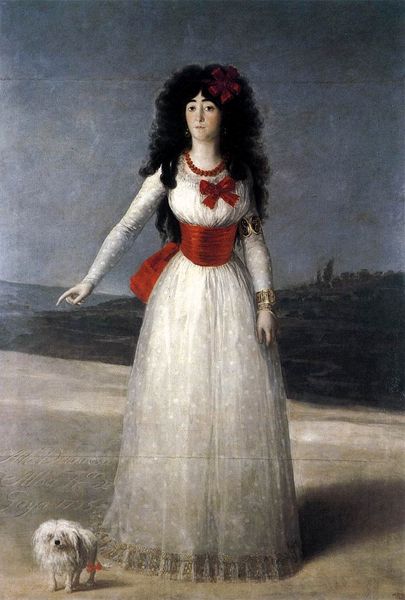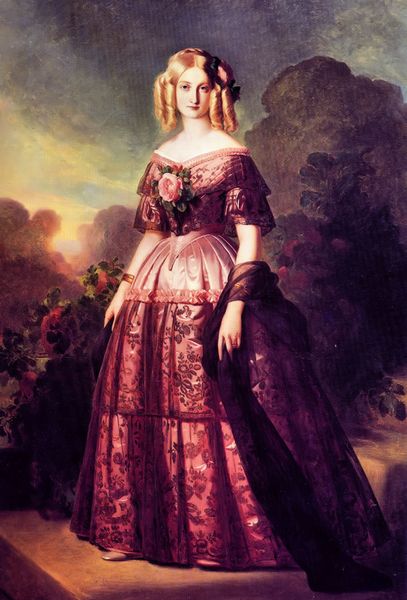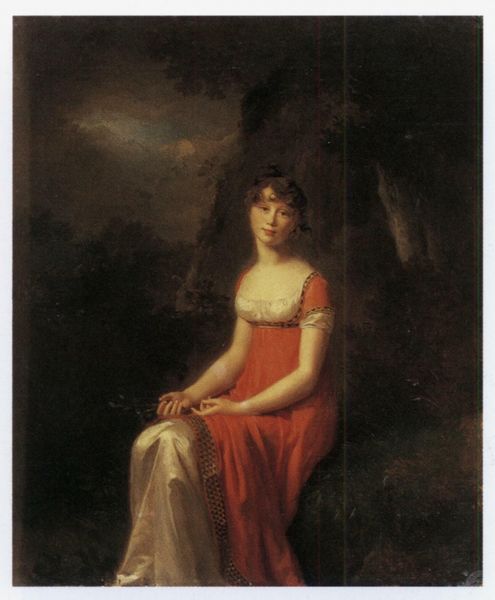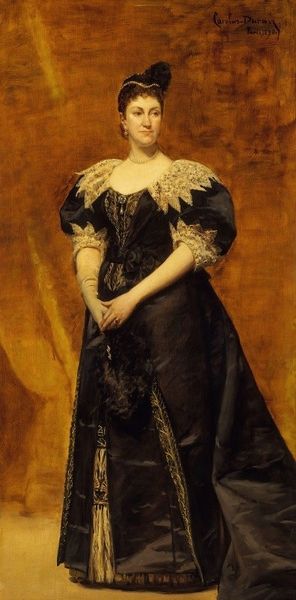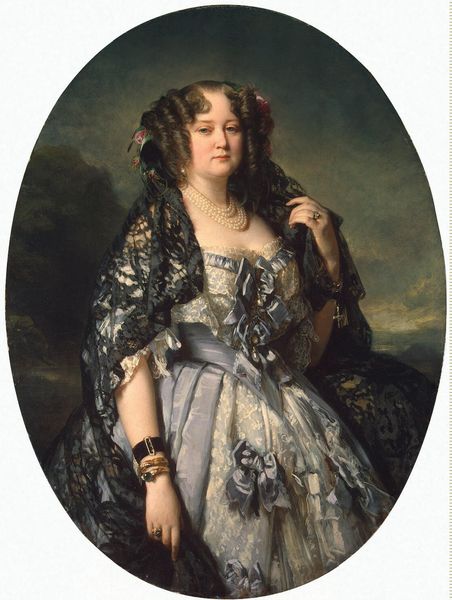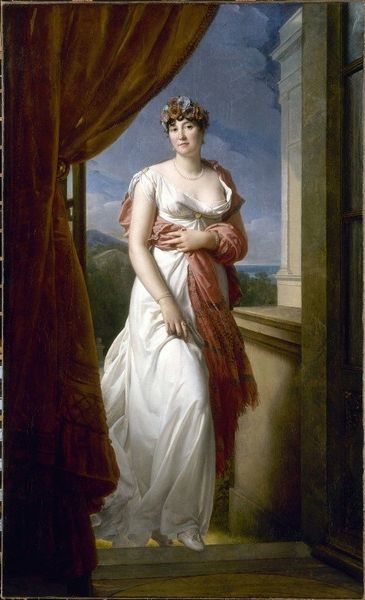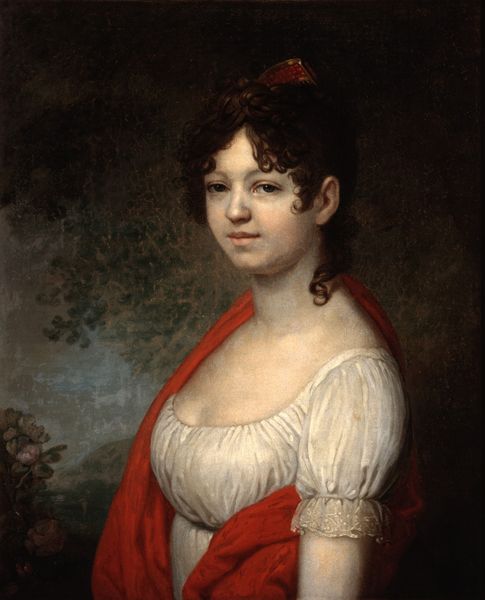
Queen María Luisa Wearing a Mantilla 1799
0:00
0:00
franciscodegoya
Palacio Real de Madrid, Madrid, Spain
painting, oil-paint
#
portrait
#
painting
#
oil-paint
#
romanticism
#
history-painting
#
academic-art
Dimensions: 210 x 130 cm
Copyright: Public domain
Curator: Goya’s 1799 portrait, "Queen Maria Luisa Wearing a Mantilla", is a striking example of Spanish Romanticism, painted with oil on canvas. Editor: She certainly projects a powerful image! It’s remarkable how Goya captures the weight of her presence despite the soft color palette and almost ethereal background. There's a kind of disquieting realism in her gaze. Curator: The mantilla, a traditional Spanish lace veil, is so much more than just attire; it’s a potent symbol of Spanish identity, layered here with class and power, considering who is wearing it. The details within the folds have great texture. Editor: And power carefully constructed. The portrait emerged during a turbulent period in Spanish history, amidst the rise of Enlightenment ideals and the decline of the monarchy's authority. Here she stands as if asserting her presence against that change. We need to look beyond this regal surface. The layers of her dress almost disappear into shadows, hinting at secrets perhaps? Curator: Her dress and her gaze carry that ambiguity; perhaps that is what Romanticism seeks—the hidden or the unsaid. I also find it very compelling how Goya plays with the jewelry and the fan. They serve as material expressions of her royal status, presented through an artistic rather than plainly representational lens. Editor: The fan, so strategically placed, it almost seems like a barrier. As we know, clothes and accessories are never just about aesthetics, especially in portraiture. Every choice signifies something deeper about gender and status. What statement is being made through the deliberate darkness surrounding the queen? Curator: Dark is very fitting considering Spain’s turmoil in that period. Ultimately, Goya provides not just a portrait, but an insightful window into a pivotal era. This particular portrayal holds value precisely because it encapsulates history within a seemingly personal image. Editor: It's true. The canvas does capture an era where old power begins its long encounter with new, more fluid ideologies and structures. I see her both as a historical figure and as a timeless symbol for traditional figures of authority facing inevitable societal change.
Comments
No comments
Be the first to comment and join the conversation on the ultimate creative platform.
